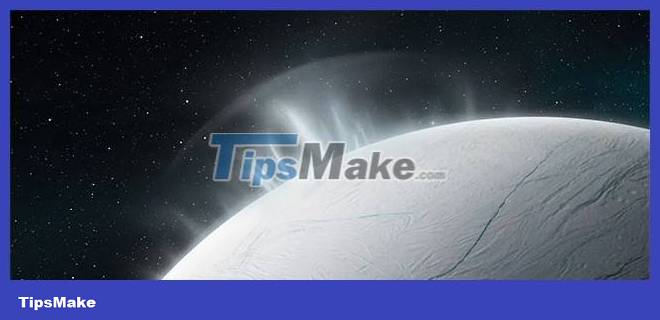Giant water columns discovered on Saturn's moon Enceladus
Water is considered one of the essential elements constituting life, and is also the most studied chemical compound in the universe. When it comes to exploring the planets in our solar system, most attention is focused on those closest to Earth, where human spacecraft can more easily visit or track. With today's powerful telescope systems, scientists regularly observe gas giants such as Jupiter, Saturn, and constantly find new things.
One of the top places scientists are interested in looking for life in our solar system is Saturn's icy moon Enceladus. Enceladus is thought to contain an ocean of liquid water beneath a thick icy crust that is capable of supporting life.
The interest of astrophysicists is growing when the Cassini mission to study Enceladus in the past has sent back to Earth images of plumes of water spewing from the planet's surface. But that was not enough, scientists needed a more advanced system to observe Enceladus in the best conditions, and James Webb was the name of choice.

Since the late 1990s, NASA has worked with the European Space Agency to develop James Webb, at a cost of about 10 billion USD. James Webb is the most powerful and modern telescope ever created by man, and is expected to provide unprecedented detailed images of the universe, helping scientists explore and learn about the universe and life beyond Earth.
Through James Webb, scientists have for the first time detected plumes of gas coming from the south pole of Enceladus. Despite Enceladus' small size (only 300 miles in diameter), the plume observed by James Webb stretched for more than 6,000 miles.
' When I looked at the data, at first I thought I was wrong ,' said NASA scientist Geronimo Villanueva. ' I was shocked to discover a column of water 20 times the size of Enceladus himself, also with many other plumes extending beyond their zone of release at the south pole' . In addition, these water plumes also spray up at a fairly fast rate at a rate of nearly 300 liters per second.

This amount of water is affecting the environment around Saturn, as Enceladus is leaving a trail of water as it orbits its host star. 'Enceladus' orbit around Saturn is relatively fast, just 33 hours. As it orbits Saturn, the jets leave behind an observable halo. ' In James Webb's observations, there were not only giant plumes of water, but water everywhere '.
There seem to be plenty of places in the solar system that could contain oceans of water, even if they are outside the habitable zone.
You should read it
- Saturn's 'tiny' moon hides essentials for life
- 50 images of Saturn's Enceladus moon - where life can exist (Part 1)
- James Webb super telescope begins to investigate the mystery of Earth's water source
- 50 images of Saturn's Enceladus moon - where life can exist (Part 2)
- Interesting truth about Saturn
- NASA announces a place that can survive life right in our solar system
 The planet has the fastest wind in the solar system, reaching a speed of 2,400 km/h
The planet has the fastest wind in the solar system, reaching a speed of 2,400 km/h Admire the image of the strange jellyfish galaxy through the eyes of the Hubble telescope
Admire the image of the strange jellyfish galaxy through the eyes of the Hubble telescope Elements of the universe
Elements of the universe Virgin Galactic aircraft carrying passengers to space successfully 'travels'
Virgin Galactic aircraft carrying passengers to space successfully 'travels' Admire the 'very different' image of Saturn under the eyes of the Hubble telescope
Admire the 'very different' image of Saturn under the eyes of the Hubble telescope Detecting an active supermassive black hole at an unprecedented distance
Detecting an active supermassive black hole at an unprecedented distance